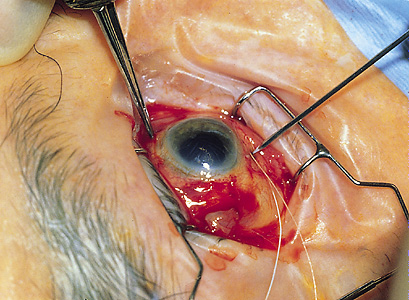Cataract, << KAT uh rakt, >> is the clouding of the lens of the eye. Its effect on vision depends on the extent of the cloudiness. Small spots in the lens may cause little or no vision loss. However, the spots can spread and make all or part of the lens opaque (nontransparent), resulting in blindness. Cataracts may affect either or both eyes.

A normal lens is clear. It lies behind the pupil and iris of the eye and helps the eye focus. Light enters the eye through the cornea, the transparent tissue that covers the eyeball. The cornea bends light rays toward each other. The lens bends them further and causes them to form an image on the retina, the light-sensitive tissue lining the back of the eyeball. The lens focuses light rays by changing shape. It becomes rounder and thicker to focus light that comes from nearby objects. The lens flattens to focus light from distant objects.
Cataracts usually are associated with aging. As a person grows older, the lens becomes less flexible and loses some of its ability to focus light onto the retina. As the lens becomes harder, it tends to become less transparent–that is, it tends to develop cataracts. Cataracts can eventually become milky white and fill the lens. The patient is then considered blind.
Cataracts also may result from certain diseases. For example, cataracts often occur in people who have diabetes. Eye inflammation or injuries may cause cataracts. Some babies are born with cataracts. Also, certain drugs and some forms of radiation can cause cataracts.
Doctors do not know how to prevent or cure most types of cataracts. But surgery to remove the diseased lens can improve vision for most cataract patients. After such surgery, some patients must wear strong glasses or contact lenses to see well enough to carry on normal activities. In most cases, however, surgeons replace the diseased lens with a plastic intraocular lens. A patient who receives an intraocular lens may or may not need glasses or contact lenses to see well.
